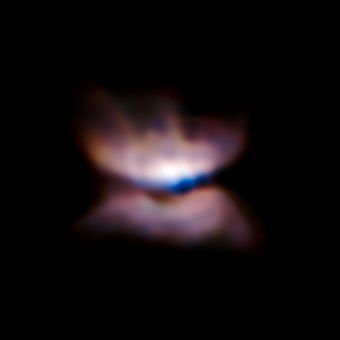
Astronomers found the dust disc to begin about 900 million kilometres from the star — slightly farther than the distance from the Sun to Jupiter — and discovered that it flares outwards, creating a symmetrical, funnel-like shape surrounding the star. The team also observed a second source of light about 300 million kilometres — twice the distance from Earth to the Sun — from L2 Puppis. This very close companion star is likely to be another red giant of slightly lower mass, but less evolved.
The combination of a large amount of dust surrounding a slowly dying star, along with the presence of a companion star, mean that this is exactly the type of system expected to create a bipolar planetary nebula. These three elements seem to be necessary, but a considerable amount of good fortune is also still required if they are to lead to the subsequent emergence of a celestial butterfly from this dusty chrysalis.

